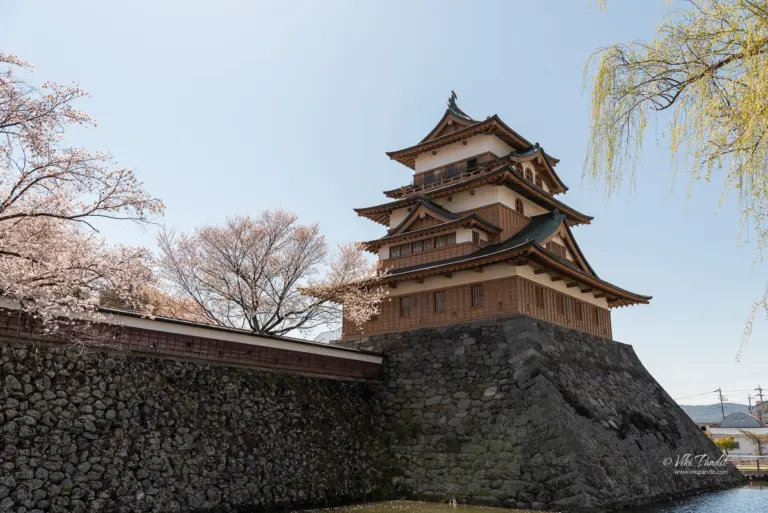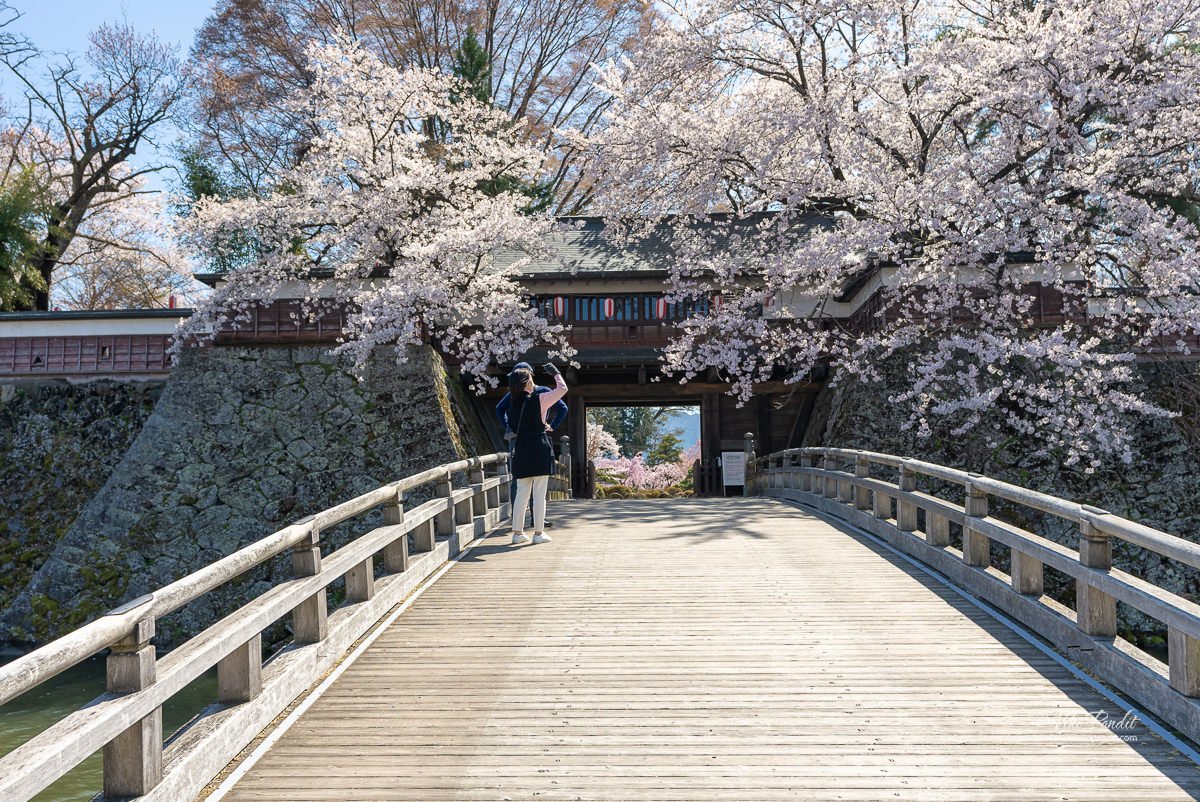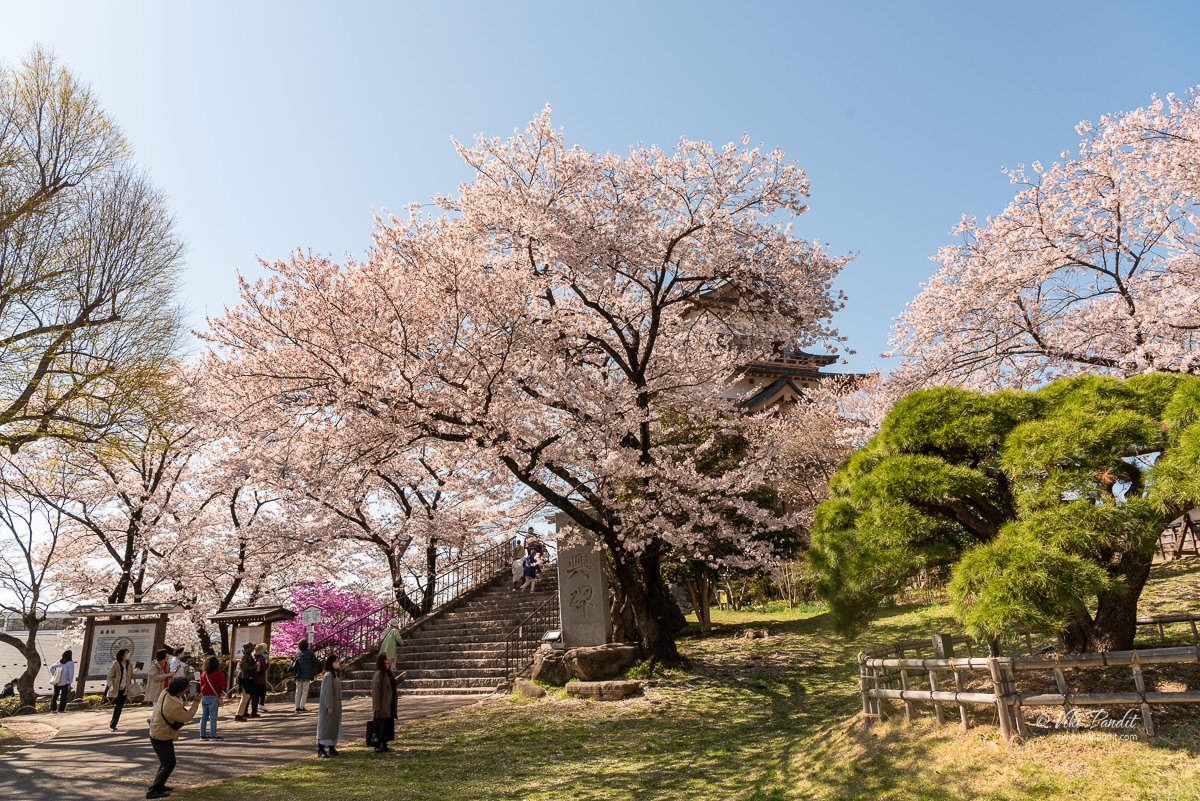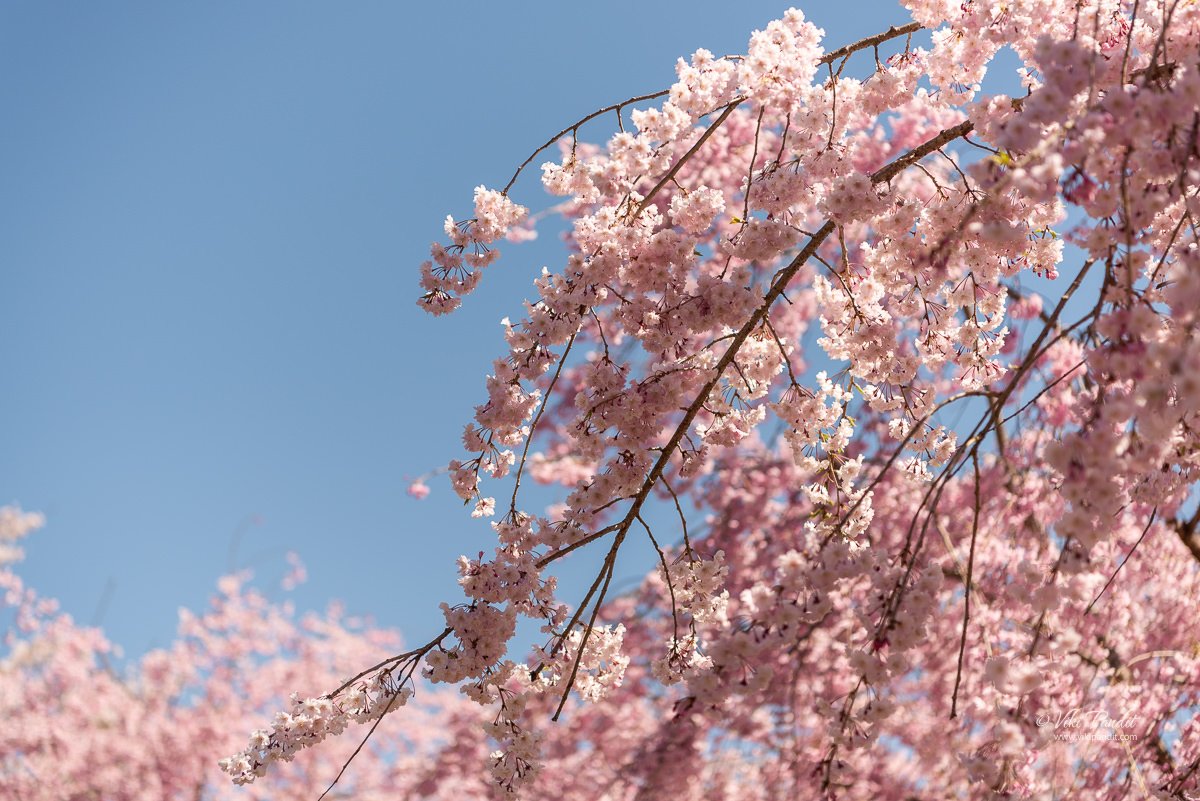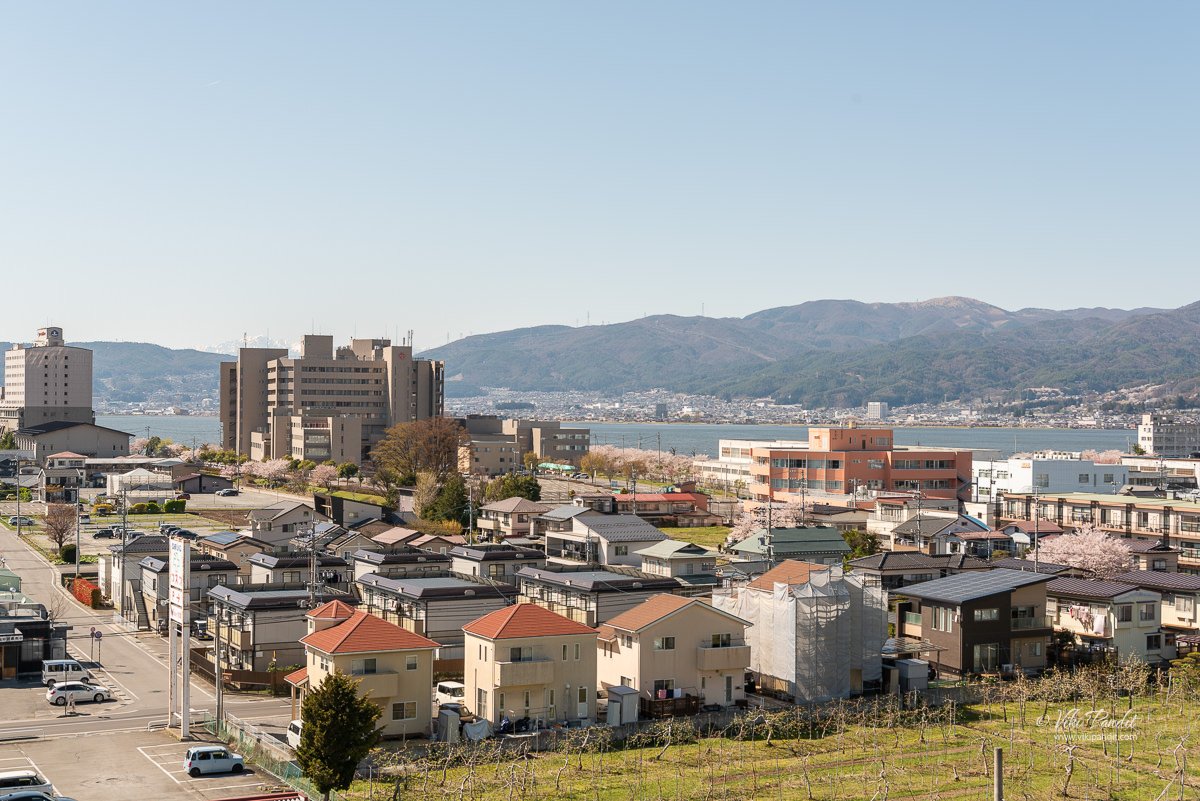Today Mani & I, go on a hunt for cherry blossoms in Japan. Sakura blooms in Japan represent a magnificent spectacle of nature’s artistry and hold deep cultural, historical, and spiritual significance. The ephemeral beauty of these delicate flowers serves as a reminder to cherish life’s fleeting moments.
Upon arriving in Osaka, we discovered that the Sakura blooming period in Kansai had already concluded. Unfazed by the disappointment and aided by our JR passes, we embarked on a search for regions further north where the Sakura blooms were still flourishing. Our quest ultimately led us to a little known: Takashima Castle ruins, nestled in the picturesque city of Suwa in Nagano. A quick search on Instagram confirmed that the park was still adorned with a breathtaking display of fully bloomed Sakura trees.
Next day, early in the morning, we took the Shinkansen from Kyoto Station to Nagoya. At Nagoya Station, we switched to the Shinano 19 Limited Express going to Shiojiri Station. From Shiojiri Station, we caught the Local Kami-Suwa to Kami-Suwa Station. The castle is located within walking distance of the Kami-Suwa Station. The total travel time was around 3 hours and we reached the castle park at noon.
A brief history of Takashima Castle
Takashima Castle stands as a testament to the rich history of the region. Even though the original castle does not exist, with its imposing presence and picturesque surroundings, this lovely castle park has captured the hearts of locals and tourists alike, offering a glimpse into Japan’s past.
Takashima Castle was built by Lord Hineno, a vassal of Hideyoshi Toyotomi in 1592 CE. The castle was initially built on a small island extending into Lake Suwa. Surrounded by several rivers emptying into Lake Suwa and marshes, the castle appeared to float and was nicknamed Suwa no Ukijiro (Floating Castle of Suwa). The lake doubled up as a natural moat on three sides of the castle.
Over time, urbanization took place around Lake Suwa and the lakeshore moved away from the castle. Meiji authorities tore down the castle structures in 1876. Several of them have been rebuilt, starting with the castle tower in 1970. Only the northern and eastern sides of the moat and the inner garden have been preserved in their authentic state.
One of the most striking features of Takashima Castle was its unique architectural design. It followed the traditional Japanese castle style known as “hirayama-kuruwa,” characterized by a multi-tiered structure with sloping roofs and intricate wooden detailing. The skilled craftsmanship exhibited in the castle’s construction reflects the precision and artistry of Japanese architecture during that era.
The replica of the castle stands as a symbol of resilience and endurance, having withstood the test of time and various tumultuous periods in Japanese history. It serves as a reminder of the profound historical legacy that continues to shape the identity of the Suwa region and the nation as a whole.
The main enclosure has three entrances. The Kabuki-mon Gate, which was rebuilt on the heavy stone walls at the northern side of the enclosure. It was also the front gate of the castle and only upper-class people were allowed to use the gate.
The castle had four enclosures in a line facing the lake. The castle is in a form called “renkakushiki” in which Kinotokaku, Sannomaru, Ninomaru, and Honmaru are lined up in a straight line from the north. Only one route was accessible to the enclosure at the edge of the castle. This design meant the castle could be very well protected.
Because the lake is nearby and the ground is soft. The main enclosure, surrounded by stone walls must have been very difficult to build on the lakeside. They were actually built on wooden rafts made from large trees in order to be stable on the soft ground. The stone walls were made of stones with only the ridges processed using a method called Nozurazumi.
Hanami at Takashima Castle Park
Upon entering the castle grounds, we were greeted by a gentle breeze carrying the delicate fragrance of cherry blossoms. The park becomes a tapestry of soft pastel hues as the cherry trees are adorned with clusters of pink and white petals. About 90 cherry trees, such as weeping cherry trees, higan cherry trees, and double cherry trees, are planted in the park.
Underneath the blossoming trees, the atmosphere is alive with a sense of joy and tranquility. People of all ages gather for hanami, the cherished tradition of flower viewing. They spread blankets and picnic mats, creating small pockets of laughter and conversation amidst nature’s grand spectacle. Friends, families, and even strangers come together, united in their appreciation for the ephemeral beauty of the Sakura.
Every spring, as winter gives way to warmer temperatures, Japan transforms into a mesmerizing spectacle of pink and white hues. The Sakura blooms adorn parks, streets, temples, and riversides, painting the landscape in a breathtaking display of natural beauty. The ephemeral nature of the Sakura blooms, which only last for a fleeting period of one to two weeks, adds to their allure, creating a sense of urgency and appreciation for the transient beauty of life.
The blooming of Sakura holds profound cultural and historical significance in Japan. For centuries, it has been celebrated as a time of joy, renewal, and contemplation. The tradition of hanami, which translates to “flower viewing,” brings people together to appreciate the Sakura blossoms in full bloom. Friends, families, and colleagues gather beneath the Sakura trees, spreading picnic blankets, and enjoying food, drinks, and lively conversations, all while marveling at the breathtaking beauty above them. This tradition fosters a sense of unity and harmony, as people connect with nature and with one another, celebrating the arrival of spring.
The Sakura blooms have inspired various art forms, literature, and poetry throughout Japan’s rich history. Renowned haiku poets and artists have sought to capture the essence of these delicate flowers, immortalizing their beauty in verse and brushstrokes. The ephemeral nature of the Sakura blossoms is often associated with the concept of mono no aware, a deep appreciation for the impermanence of things, and the profound emotions evoked by their fleeting existence.
Any Japanese park during Sakura bloom is not merely a visual feast but also a place of profound emotions. It is a space where one can reflect on the transient nature of life, where the ephemeral beauty of the Sakura becomes a poignant reminder to cherish each passing moment.
The Sakura season is eagerly anticipated by both locals and international visitors, with countless festivals and events dedicated to celebrating these delicate flowers. Locations like this become bustling hubs of activity, with crowds flocking to witness the enchanting beauty of the Sakura blooms.
Takashima Castle serves as a cultural and educational hub for the local community and beyond. It hosts regular events and exhibitions, showcasing traditional arts, performances, and historical reenactments. In the peaceful time during the Edo Period, a view of the castle with Suwa Lake became a popular attraction in the area. These activities not only preserve Japan’s rich heritage but also allow visitors to engage with and appreciate the vibrant culture that surrounds the castle.
The surrounding natural beauty, including the breathtaking views of Lake Suwa and the majestic Japanese Alps, further enhance the allure of this historical gem. The castle’s strategic location not only offered defensive advantages but also allowed for uninterrupted views of the stunning landscape, creating a sense of harmony between man-made structures and nature.
Takashima Castle is the highest elevation flatland castle ever constructed in Japan.
The Suwa clan had ruled the area around Lake Suwa in Shinano Province since ancient times. The clan was defeated by Takeda Shingen in 1542. The final Suwa ruler, Suwa Yorishige was forced to commit seppuku. The Takeda Clan was also defeated by Nobunaga Oda in 1582. However, confusion prevailed in the district when Nobunaga was killed in the same year. When Hideyoshi Toyotomi gained power at the end of the 16th Century, he sent his retainer, Takayoshi Hineno to Suwa District.
A three-story, three-storied watchtower was built in the main enclosure, but one of Takashima Castle’s major characteristics is that the roofs of the main buildings, including the keep, were not tiled but shingled.
Even though Hineno Takayoshi built Takashima Castle, in 1601, his son Hineno Yoshiaki, was demoted to Mibu Domain. In the same year, following several linked incidents, Suwa Yoritada’s son, Suwa Yorimizu, was allowed to reclaim his clan’s ancestral lands as daimyō of Suwa Domain. His descendants ruled for 270 years thereafter (clans both took their names from and gave their names to areas in feudal Japan).
Suwa Lake is now about 400m away from the park, so it is difficult to imagine “the floating castle”.
The rebuilt Main Tower is actually a modern building that looks similar to the original one. The building has copper plate roofing, not wooden strip roofing from the original, but they probably resemble each other. The inside of the tower is used as a historical museum and an observation platform.
Visitors are allowed to take very limited photos inside the castle.
Inside Takashima Castle, visitors can explore the various chambers that exhibit Naginata(a pole sword), lancers, and some Japanese armor among other artifacts. The preservation of original artifacts, such as armor, weapons, and historical documents, provides a glimpse into the lifestyle and traditions of the castle’s inhabitants.
The first floor provides some special exhibitions on Suwa’s traditional events and tourist information, and the materials related to Takashima Castle are displayed on the second floor. From the small observatory room on the third floor, you can see the snow-capped Japanese Alps, Suwa city and the peak of Mount Fuji on a clear day. You can in the photo below see a faint Mt. Fuji in the distance.
Mount Fuji has been at the center of Japanese spiritual practice for thousands of years with countless individuals summiting the volcano in pilgrimage. Although the volcano is now considered dormant, in the past it was both a site of reverence and a source of apprehension, much like the gods being worshipped in ancient times.
We spent a couple of hours at the castle park. It was a long way to go back to Kyoto so we decided not to stay any longer. I love capturing castles at sunset but grudgingly we had to leave for Kami-Suwa Station.
Takashima Castle embodies the essence of Japan’s historical and architectural grandeur. From its strategic hilltop location to its intricate design and cultural significance, the castle stands as a cherished jewel that invites visitors to immerse themselves in the captivating world of ancient Japan. Sure, it is not as grand as the castles in Osaka or Matsumoto (my favorite), and it is a reconstruction because it was destroyed long ago and rebuilt, but it is definitely worth seeing especially during the time of Sakura blooms.
Suwa Area of Nagano Prefecture is famous for its tourist spots like Suwa Lake and Suwa-taisha Shrine. A visit to Takashima Castle is not just a touristic experience but a profound journey through time, offering a deeper appreciation for the rich heritage that has shaped this remarkable country.
1592 CE
9:00 – 17:30
(Closes at 16:30 between 1st October and 31st March)
12/26-12/31 and 2nd Thursday in November
310 yen for adults
150 yen for children
Admission to the park is free
Disclaimer: The information presented in this article is based on the time I visited the premises. Note that there might be changes in the prices of merchandise and admission fees that might have occurred after this article was published. At times the facility might also be closed for repairs or for variety of other reasons. Kindly contact the facility or facilities mentioned in this article directly before visiting.
Usage of this site indicates acceptance of my Terms and Conditions.
Credits: The historical information presented herein is gathered mostly from local guides that were re-inforced via historical writings.
